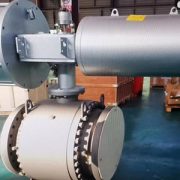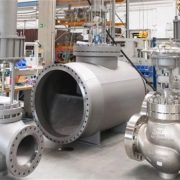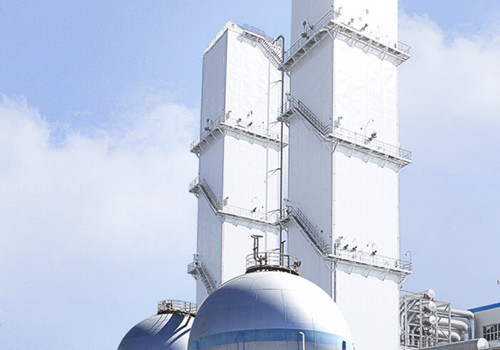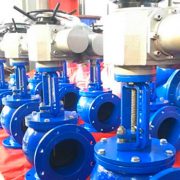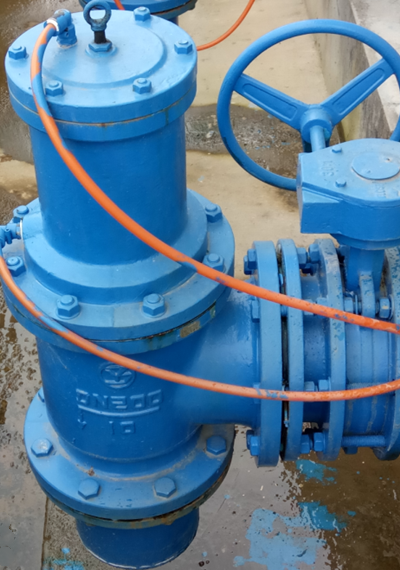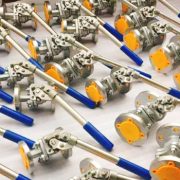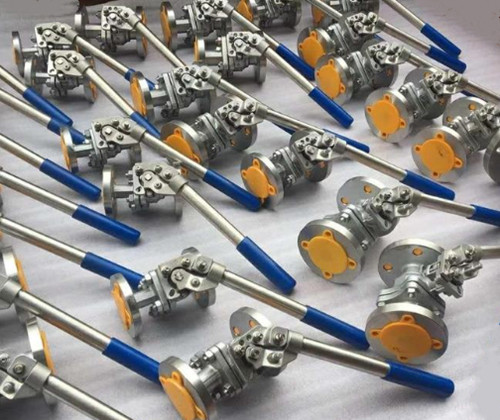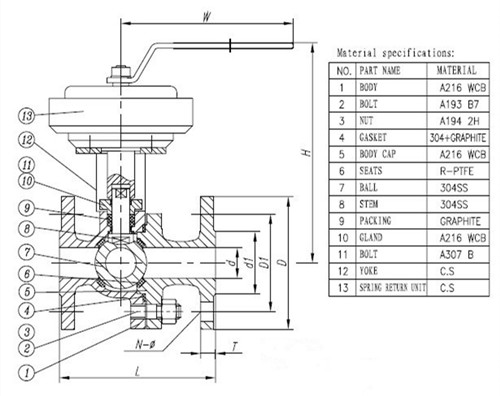The safety valve is also known as the relief valve, when the pressure or temperature of the medium in the system or pipeline increases beyond the specified value, the safety valve discharges the medium outside of the system to protect the pipeline or equipment from exceeding the specified value. It is widely used in steam boilers, liquefied petroleum gas truck or liquefied petroleum gas tanker, oil Wells, steam power generation equipment of the high-pressure bypass, pressure pipelines, pressure vessels.
Classification of safety valve
The safety valve can be divided into a lever safety valve, spring safety valve, static weight safety valve and pilot safety valve according to the overall structure and loading modes. Spring safety valve refers to the valve of which disc seat seal by the spring force; Lever safety valve is operated by the force of the lever and heavy hammer; the Pilot safety valve is designed for large capacity, composed of the main valve and auxiliary valve.
Lever safety valve
The heavy hammer lever safety valve uses a heavy hammer and lever to balance the force on the disc. According to the principle of lever, it can use the weight of a smaller weight to increase the action of the lever to obtain a greater force and by moving the weight position (or changing the weight of the weight) to adjust the opening pressure of the safety valve.
Advantages: simple structure, convenient and accurate adjustment, the load will not be greatly increased due to the rise of the disc, suitable for higher temperatures, especially for higher temperature boilers and pressure vessels.
Disadvantages: Heavy structure, easy vibration and leakage of loading mechanism; low Return seat pressure and difficult to close and keep tight after opening.
Spring safety valve
The spring safety valve uses a compression spring to balance the force on the disc. The amount of compression of the coil spring can be adjusted by the opening pressure of the relief valve through the nut.
Advantages: Compact structure and high sensitivity, unrestricted installation position, can be used for mobile pressure vessels because of the small sensitivity to vibration.
Disadvantages: The load will change as the valve opens, that is, as the disc rises, the amount of spring compression increases, the force on the disc also increases. This is detrimental to the rapid opening of the valve.
The safety valve will reduce the elasticity due to the long-term high temperature, so the spring used in high or low-temperature situations should be fully considered the temperature of the spring on the deformation and the spring material creep or cold brittleness. In order to ensure the stability of the spring when working for a long time, the spring should be subjected to strong pressure treatments, and issued a strong pressure treatment, material, heat treatment report. Generally appropriate to use a cylindrical spiral compression spring, to ensure that the safety valve is fully open, the deformation of the spring is equal to the maximum deformation of the spring of 20%-80%, the maximum shear stress of the spring design is not greater than the allowable shear stress of 80%.
According to the way of medium discharge, the safety valve can be divided into fully closed, semi-closed and open safety valve.
Fully enclosed safety valve
The gas is discharged through the exhaust pipe and the medium cannot leak out when the fully enclosed safety valve exhausts. It is mainly used for the container of toxic and flammable gas.
Semi-enclosed safety valve
Gas from the semi-enclosed relief valve passes partly through the exhaust pipe and partly through the gap between the cover and the stem. It is mainly used for the container of gas which will not pollute the environment.
Open safety valve
The bonnet is open to allow the spring chamber to communicate with the atmosphere, which is conducive to reducing the temperature of the spring, mainly suitable for the medium of steam, as well as the atmosphere does not produce pollution of high-temperature gas containers.
According to the ratio of the maximum height of disc opening to the diameter of the relief valve port, the safety valve is mainly divided into low lift safety valve and full lift safety valve.
Low lift safety valve
The opening height is less than 1/4 of the diameter of the flow channel, usually 1/40 -1/20, proportional action process, mainly used for liquid and sometimes for small emissions of gas occasions.
Full lift safety valve
The opening height is greater than or equal to 1/4 of the port diameter and the discharge area is the minimum cross-sectional area of the seat. Two-stage action process, it must rely on a lifting mechanism to achieve full open and mainly used in the gas medium.

